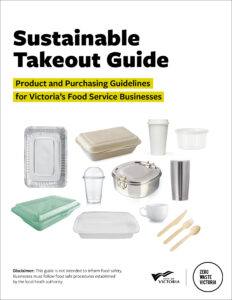McDonald’s Canada announces country’s first “Green Concept Restaurant” as part of its sustainability journey
McDonalds’ Canada has revealed two “Green Concept Restaurants” in London, Ontario and Vancouver, British Columbia. These restaurants will act as incubator locations to test new packaging and recycling initiatives. New packaging tests will include Canadian QSR firsts – fully re-pulpable cups and fibre lids.
Media Release
New packaging tests will include Canadian QSR firsts – fully re-pulpable cups and fibre lids
TORONTO, June 19, 2019 /CNW/ – McDonald’s Canada is on a journey to make its packaging more sustainable as part of its goal to reduce its environmental footprint and source 100 per cent of guest packaging from renewable and/or recycled materials.
To help get there, McDonald’s will unveil two “Green Concept Restaurants” in London, Ontario and Vancouver, BC. These restaurants will act as incubator locations to test new packaging options and recycling initiatives.
The Green Concept Restaurants will continue using much of the current McDonald’s packaging but will also test items with the potential to be rolled out more widely in the future. The first innovations will begin testing in the coming months and include:
- A fully re-pulpable cup for cold beverages – a Canadian QSR first
- The cup uses an aqueous coating that is acceptable in recycling streams
- A medium size cup will be tested
- New fibre lids – a Canadian QSR first
- Product is made from 100% Forest Stewardship Council (FSC) certified wood fibre and is recyclable
- The lid will also help reduce straw use, as guests can sip from it directly
- Lids will be tested on all three cold cup sizes
- Wooden cutlery
- Wooden stir sticks
- Paper straws
Canadians are looking for brands to take a leadership role in making positive change in the industry. Globally, McDonald’s has been on a journey to offer guests more sustainable packaging and reduce waste overall. These immediate enhancements, along with changes made over recent years, will remove more than 1,500 tons of packaging materials from the McDonald’s Canada system by:
- Napkins: Introducing a smaller napkin (20 per cent smaller) produced with 100% recycled fibre in all restaurants, which eliminates more than 900 tons of paper.
- McWrap® carton: Transitioning from a McWrap carton to a McWrap wrap will eliminate more than 400 tons of packaging.
- Foam: Eliminated foam from the gravy bowl and breakfast platter, removing more than 130 tons of foam.
- Small Coffee Cup: The lightweighting of the small hot cup – removing paper from the outer layer of the cup – eliminated more than 123 tons of paper.
- Added a How 2 Recycle (H2R) label to Happy Meal® boxes, clear cups and carryout bags to help guests determine how packaging can be recycled.
Quotes:
“We are proud of the progress our Canadian organization is making towards our global packaging sustainability goals – it matters to our guests and we will continue taking our environmental responsibility seriously,” says John Betts, President and CEO at McDonald’s Canada. “Our Green Concept Restaurants are an exciting new innovation as part of our on-going sustainable journey. They are an example of how we’re able to use our scale for good and keep raising the bar on what it means to be a responsible company committed to people and the planet.”
“Packaging plays a vital role in how Canadians experience and enjoy the food they choose to eat, wherever they go. As category leaders for McDonald’s packaging, HAVI has been proud to help McDonald’s push the boundaries of how their packaging can create less environmental impact while maintaining the top safety and quality standards that people expect and deserve,” says Douglas Moody-Stuart, Senior Vice President, Packaging, HAVI.
“We’re in a game-changing moment as industries across the planet evolve to offer consumers more sustainable packaging options. It’s incredible to see leading organizations such as McDonald’s lead the way to catalyze this change by trying new, innovative solutions to operate more sustainably and tend to our planet,” says James Downham, President and CEO, PAC Packaging Consortium.
“As a leader in the quick-service industry, I’m proud that we’re taking bold moves to drive forward on the important topic of packaging and our environment. We know that when we innovate in our supply chain we can move the market, as we’ve done with beef from certified sustainable sources, chicken raised without antibiotics important to human health and cage-free eggs,” says Rob Dick, Supply Chain Officer at McDonald’s Canada.
“Packaging has a significant footprint in our world. This is exactly why we believe it’s vital for organizations to reshape how products are delivered to Canadians. McDonald’s is doing exactly this by embarking on an ambitious journey to be more sustainable. We look forward to following this journey from a true brand leader. Credit to McDonald’s for championing this change,” says Nina Goodrich, Executive Director, Sustainable Packaging Coalition.
Additional facts:
- The two Green Concept Restaurants will be at 3444 E Hastings St, Vancouver, BC and 1033 Wonderland Rd South, London, Ontario.
- McDonald’s Canada is a key partner with other leading brands, industry experts and innovators to bring fully recoverable hot and cold fibre cup systems to a global scale via the NextGen Cup Challenge.
- Globally, McDonald’s has committed that by 2025, 100 percent of McDonald’s guest packaging will come from renewable, recycled, or certified sources.
- Also by 2025, McDonald’s has set a goal to recycle guest packaging in 100 percent of McDonald’s restaurants. McDonald’s understands that recycling infrastructure, regulations and consumer behaviors vary city to city and country to country around the world, but it plans to be part of the solution and help influence powerful change.
- McDonald’s is also committed to ensuring that 100 per cent of fibre-based packaging is sourced from recycled or certified sources by 2020.



